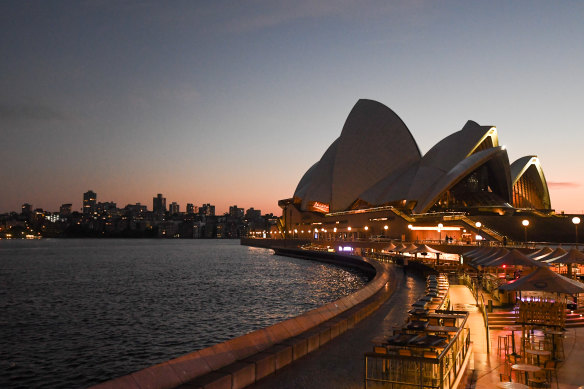Australia’s luxury property market outperformed its international peers. Here’s how
By Sue Williams
Luxury property prices are still holding up in Australia, despite a slowdown elsewhere in the world triggered by rising interest rates crushing affordability.
All four Australian cities analysed in Frank Knight’s latest Prime Global Cities Index recorded an increase in luxury residential property prices. Perth led the way, jumping 3.7 per cent over the past year to June, followed by Sydney, up 3.1 per cent, then Brisbane, up 2.4 per cent and Melbourne, up 0.6 per cent.

Migration and population growth helped boost Australia’s luxury property market.Credit: Peter Rae
Overall, annual price growth for the top 5 per cent of the property markets around the world slowed from 4.1 per cent in the first quarter of 2024 to 2.6 per cent in the June quarter. A quarter of the 44 cities tracked in the index clocked negative growth.
”Prices in Australian markets are still benefitting from the recommencement of migration after COVID,” Knight Frank global head of research Liam Bailey said from London. “That population growth, mirrored in the first world by Ireland and the US, is helping underpin prices.
“But we expect Australia will also see a slowdown in price growth in the luxury market over the next year or so like the rest of the world, but that will also depend on whether interest rates are cut, which will have an effect on affordability.”
Perth came in at number 14 on the growth list, Sydney at 18, Brisbane at 20 and Melbourne at 31 in the ranked cities around the world.
The Philippines capital Manila topped the list, up 26 per cent, and India’s Mumbai and Delhi took out the next two spots, increasing 13 per cent and 10.6 per cent respectively. All three cities are profiting from population growth, and a growing middle class. The US, Dublin, Madrid and Lisbon have been boosted by migration.
Ray White Double Bay principal and managing director Elliott Placks said interest from overseas was one of the reasons that the luxury property market had been so resilient.
“Internationally, we’re seeing a strong interest in Sydney prestige property from Europe, Asia and also the expat community coming back,” Placks said. “They all want views or large landholdings, and see Sydney as a safe haven, while locals are looking to upgrade.
“Demand for trophy properties in Sydney is very robust also, as the prime residence is a tax-free asset and a lot of wealthy people are waiting in the wings looking for something special to come up. So when they do, they’re very well received. And that prestige market tends not to be as affected by interest rates.”
Melbourne luxury property was not doing as well, with a slight 0.2 per cent weakening over the June quarter, but overall, there was still plenty of activity at that top end, said Marshall White group sales director John Bongiorno.
“The luxury property market in Melbourne is a tad price sensitive at the moment,” he said. “There’s still demand for anything that’s really good, but if there’s a property that doesn’t quite tick all the boxes, then it will come down to price.
“I think that market isn’t a good market, but it’s not bad either, but it has come down by just a whisker in favour of the buyer. But what’s helping is population growth and overseas interest in the market, particularly from Asia and, most of all, China. That’s our strongest market, and it helps that Melbourne has a higher Asian population than either Sydney or Brisbane.”
NAB chief economist Alan Oster said land tax issues and rental regulation changes in Melbourne were slowing the market, while Perth prices were still rising fast off the back of interstate migration, and Sydney and Brisbane’s price growth was positive, but easing.
“At the top end, we’re seeing people in Hong Kong saying, ‘Stuff it! Let’s go back to Australia!’,” Oster said.
“But we’ll have to wait and see how interest rates go for any major changes to the market. We moved our forecast for a rate cut from November this year to May, which is probably, with hindsight, too far,” he said.
“But that’ll depend on how the data goes, particularly unemployment and inflation. And with the luxury market, I have a house in Portsea but when you move outside, it looks like half the houses are for sale.”